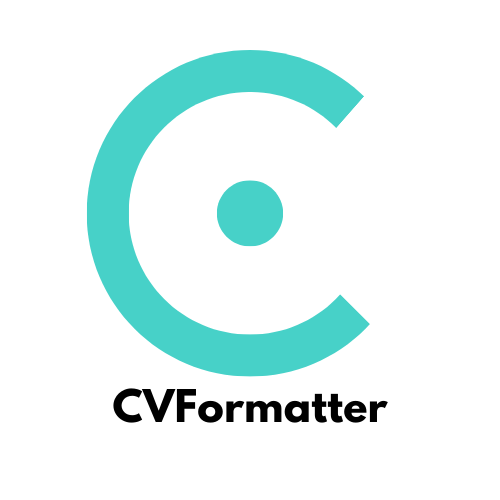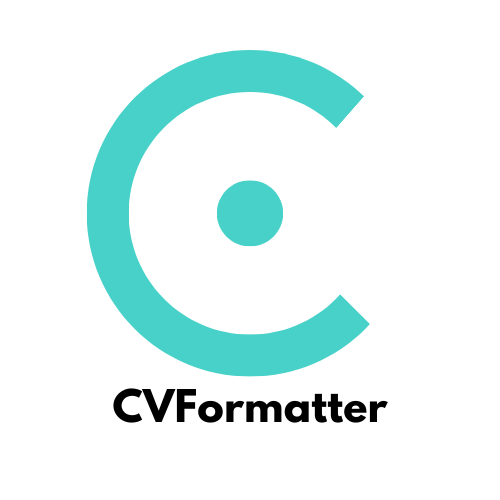How to Build a Scalable Recruitment Process for High-Growth Firms

Recruiting in high-growth recruiting companies can be tricky. You need to hire quickly but still find good workers. For example, 76% of hiring teams say finding good candidates is hard. Slow screening can make you lose 89% of possible hires. A flexible hiring process can solve these problems. It helps you adjust to changes in hiring needs. It also matches your business goals, helping you grow faster.
Key Takeaways
Figure out what jobs you need to fill now and later. Check open roles and how often people leave to know where to focus hiring.
Match your hiring goals with your company’s plans. This helps your business grow and keeps workers happy.
Use tools like Applicant Tracking Systems (ATS) and AI. These tools make hiring faster and help find better workers.
Make the hiring process better by talking clearly and fast. Good communication makes candidates happier and more likely to accept offers.
Keep track of hiring numbers and ask for feedback. Use this information to improve hiring and adjust to business changes.
Identifying Recruitment Needs for High-Growth Recruiting
Assessing Current and Future Hiring Demands
Knowing what your team needs is the first step. You must check both short-term and long-term hiring needs. This ensures your team can handle fast growth. Start by looking at open jobs and how often people leave. This shows where you need help and which roles are most urgent.
Planning for future hiring is just as important. Think about new projects, growth plans, and past trends. This helps you guess how many workers and what skills you’ll need. For example:
Company A hires sales and customer success staff quickly. This shows they are growing their market and products fast.
Company B focuses on research and slows other hiring. This means they are still in a testing phase.
To measure the gap between what you have and what you need, track things like turnover, promotions, and skills inventory. Use this table to guide your review:
Metric | Description |
|---|---|
Check Current Needs | Look at open jobs and turnover to see gaps. |
Predict Future Needs | Use projects and past data to plan hiring. |
Review Talent Inventory | Find skill gaps and keep a list of needed skills. |
Decide Talent Mix Needed | List skills and experience to fill gaps. |
Check Internal Candidates | See if current workers can be promoted or moved. |
Look for External Candidates | Connect with outside talent early. |
Track Promotion Rates | Watch promotions to see how engaged workers are. |
Watch Turnover Rates | Keep an eye on turnover to save hiring costs. |
Boost Candidate Engagement | Make applying easy to attract more people. |
Improve Sourcing Strategies | Use data to make hiring smarter. |
By reviewing these points, you can build a hiring plan that fits your company’s growth.
Defining Critical Roles and Skill Sets for Growth
Fast-growing companies need to focus on key roles and skills. Not every job helps a company grow the same way. You must find the roles that match your goals.
Important skills do more than keep things running. They solve big problems and help the company improve. For example, if your company wants to lead in tech, hire software engineers or data experts.
Here’s why finding these roles is key:
Key skills solve big problems and help the company grow.
Basic skills keep things running but don’t lead to big changes.
Knowing key roles helps you focus on hiring the right people.
When you know which roles matter most, you can spend wisely and hire the best people to meet future needs.
Aligning Recruitment Goals with Business Objectives
Your hiring goals should match your company’s big plans. When hiring fits your goals, your team helps the company grow and improve.
Clear hiring goals make the process better. They help recruiters work faster and smarter. For example, aiming to hire faster keeps quality high while saving time.
Matching HR plans with company goals also boosts worker happiness and productivity. It makes your company flexible and ready for change. Here’s why this matters:
Hiring goals make teams stronger and help the company grow.
HR plans tied to company goals improve overall performance.
Training that matches goals keeps your company competitive.
By linking hiring goals to business plans, you create a process that supports your company’s future success.
Using Technology to Improve High-Growth Hiring
Technology is very important for making hiring easier and faster. The right tools can save time, make tasks simpler, and help you hire better. Below are three ways technology can change how you hire.
Using Applicant Tracking Systems (ATS)
An ATS helps manage hiring when your company is growing fast. It organizes candidate details, automates boring tasks, and tracks hiring progress. This lets you focus on smart decisions instead of paperwork.
Here’s how an ATS helps:
Statistic | What It Means |
|---|---|
Recruiters save 20% of their time using ATS. | |
$10,000 | Small companies save up to $10,000 with ATS. |
40% | New hires stay 40% longer with ATS. |
23 hours | Recruiters save 23 hours weekly using ATS. |
A tech company cut hiring time by 50% with ATS. |
Most recruiters say ATS tools make hiring faster and better. They also help teams work together smoothly. Using an ATS can make hiring easier and meet your company’s fast growth needs.
Adding AI and Automation for Faster Hiring
AI and automation make hiring quicker and more accurate. These tools can screen resumes, match candidates, and schedule interviews. This gives your team more time to connect with top candidates.
Here’s how AI and automation help:
Evidence Description | Statistic |
|---|---|
Better job matches with AI | 38% |
Faster hiring process | 30% |
Higher employee retention | 12% |
Unilever cut hiring time | 50% |
Lower hiring costs | 20% |
Improved retention rates | 15% |
For example, IBM’s AI tool improved hiring success by 35%. It also reduced early employee turnover by 20%. Many candidates like when AI makes applying easier. Adding AI and automation can save time, improve hiring, and help you make smarter choices.
Using Tools Like CVFormatter for Resumes
Handling resumes well is key for fast hiring. Tools like CVFormatter make this easy by formatting resumes automatically. This saves up to 90% of the time spent on manual work.
Here’s how CVFormatter helps:
Statistic | Why It Matters |
|---|---|
75% of resumes rejected before review | Shows why ATS-friendly resumes are needed. |
Tailored resumes 40% more likely to get interviews | Proves custom resumes work better. |
Resumes with achievements 40% more likely to stand out | Highlights the need for clear successes. |
CVFormatter lets you create resumes that match your company’s style. It works with many file types and speeds up resume handling. By using tools like this, you can focus on finding the best workers for your team.
Standardizing Workflows for High-Growth Recruiting
Making Hiring Steps Repeatable
Having repeatable hiring steps is important for fast-growing companies. A clear system helps keep things organized as your company grows. Automating tasks like posting jobs, sorting resumes, and setting up interviews saves time. It also reduces mistakes. Tools like applicant tracking systems (ATS) can help manage these tasks while keeping quality high.
To check if your hiring process works well, track these:
How good the new hires are
How fast you hire people
How candidates feel about the process
How happy employees are
How often workers leave
Companies using tech to study these numbers often hire better. By automating tasks and watching these metrics, you can build a hiring system that grows with your company.
Using Clear Job Descriptions and Interview Plans
Clear job descriptions and interview plans help find the right people. Job descriptions explain what the job needs and what skills are required. This helps candidates know what to expect. Structured interviews let you judge all candidates the same way.
Studies show structured interviews work better than unstructured ones. Tools like interview scorecards make this even easier. Scorecards give a fair way to rate candidates based on set rules. This lowers bias and ensures everyone gets a fair chance.
By making job descriptions and interviews consistent, you can hire better and faster.
Teaching Managers to Be Consistent
Training managers is key to keeping hiring fair and consistent. Bias can affect decisions, so training to spot and reduce bias is important. Good training includes:
Activities to find personal biases
Stories showing how bias changes hiring
Practice interviews without bias
Setting clear rules for judging candidates
Structured interviews also help by using fair questions and scoring systems. Data-based hiring focuses on scores and results, making decisions fairer.
By giving managers the right tools and training, you can create a fair hiring process that matches your company’s goals.
Enhancing Candidate Experience in High-Growth Recruiting
Communicating Quickly and Clearly with Candidates
Talking clearly and fast helps candidates feel good about applying. Keeping them updated shows you care and keeps them interested. If messages are slow or confusing, candidates may get upset or lose interest. Big companies like Google and Microsoft get over 85% of applications finished by being clear.
Fast replies also make hiring quicker. SHRM says quick communication can cut hiring time by 30%. This makes candidates happier and raises the chance they’ll accept job offers by 15%, according to Glassdoor.
Here’s how good communication helps hiring:
Metric | Evidence |
|---|---|
Candidate Satisfaction Rate | 42% more satisfaction with clear updates (Jessica Miller-Merrell) |
Application Completion Rate | Over 85% finished applications at Google and Microsoft with clear messaging |
Time to Hire | Hiring time cut by 30% with fast replies (SHRM) |
Offer Acceptance Rates | 15% more accepted offers with good communication (Glassdoor) |
Return on Investment (ROI) | $4 earned for every $1 spent on better communication (Deloitte) |
By talking clearly and quickly, you can make candidates happier and improve hiring results.
Making Interactions Personal to Build Connections
Personal messages make candidates feel special and respected. Treating each person differently builds trust and helps you hire better. For example, candidates with good experiences are 66% more likely to say yes to a job offer.
Here’s how personal touches help hiring:
Ads that match candidate interests attract better talent.
Custom tools check skills more accurately.
Easy applications make candidates want to apply.
Offers that fit candidates’ needs are more appealing.
Still, only 25% of managers stay in touch with rejected candidates. By being more personal, you can keep connections and build a list of future hires.
Making Applications and Interviews Simple
Easy applications and interviews make candidates want to apply. Complicated steps can scare people away, with 60% quitting applications because of this.
To fix this, focus on these ideas:
Make applying simple and easy to use.
Reply quickly during every step.
Be respectful and efficient in interviews.
A better experience leads to 70% better hires. By making things simple, you can attract great candidates and hire faster.
Using Data to Improve Fast-Paced Hiring
Watching Metrics Like Time-to-Hire and Cost-per-Hire
Tracking numbers helps you see how well hiring works. Time-to-hire shows how fast you fill jobs. Cost-per-hire tells how much hiring costs. For example, in 2025, it takes 41 days to hire someone. Top companies aim for 33 days. Hiring costs $4,700 on average but can be 3-4 times a salary for special jobs.
Metric | Value |
|---|---|
Average Cost per Hire | $4,700 |
Cost as Multiple of Salary | 3-4 times salary |
Average Time to Hire | 41 days (2025) |
Interviews per Hire | 20 (2025) |
By checking these numbers, you can find problems and fix them. Fast hiring needs smart planning. Watching these metrics helps your team stay ahead.
Using Feedback from Candidates and Managers
Feedback helps make hiring better. Candidate surveys show what works and what doesn’t. For example, feedback on job ads and updates can help you write clearer messages.
Managers also give useful ideas. Their input shows gaps in how you pick and attract workers. Checking feedback often keeps your hiring process strong and up-to-date.
Surveys show what candidates like or dislike.
Feedback on updates keeps candidates interested.
Manager input improves hiring plans and builds better teams.
Using feedback helps you adjust to changes and find great workers.
Changing Processes with Data
Using data helps you improve hiring over time. By studying numbers and feedback, you can try new ideas and make things better. For example, companies using feedback cut hiring mistakes by 40% and keep candidates happier.
Watch numbers to see if changes work.
Use feedback to improve hiring steps.
Change plans to match market needs.
This method helps you make hiring easier and better. Fast-growing companies need to stay flexible, and data helps your team stay ready and effective.
Building Adaptive Strategies for High-Growth Recruiting
Working with Teams from Different Departments
Getting help from different teams makes hiring better. People from various departments share their ideas and viewpoints. This teamwork helps you pick candidates who not only have the right skills but also fit your company’s culture and goals.
Here’s how teamwork improves hiring:
Description | |
|---|---|
Smarter decisions | Looks at candidates from many angles for better choices. |
Better candidate review | Checks skills and cultural fit with different opinions. |
Faster hiring process | Brings everyone together to avoid delays and confusion. |
Less bias in hiring | Uses diverse views to make fairer decisions. |
By working with different teams, you make hiring fairer and faster. This method helps you find people who match your company’s vision and values.
Being Flexible to Match Business Changes
Flexible hiring plans are key for fast-growing companies. Business needs can change quickly, so your hiring must adjust too. For example, Recruitment Process Outsourcing (RPO) offers custom solutions that fit your company’s needs. Embedded recruiters can also change plans quickly to match business goals.
Here’s how flexible hiring helps:
RPO gives custom plans that fit changing needs.
Embedded recruiters adjust hiring strategies as needed.
Quick hiring methods find talent fast when markets shift.
Old hiring methods often can’t keep up with fast changes. Flexible plans let you grow your team and adapt to new challenges.
Always Improving Your Hiring Process
Improving your hiring process helps your company grow. Listening to feedback from workers and candidates shows what needs fixing. For example, Workiva used surveys to improve hiring and got better results.
Big companies like Microsoft also focus on teamwork and inclusivity. Under Satya Nadella, Microsoft became more collaborative, which made workers happier and attracted great talent.
Here’s why improving matters:
Feedback shows where hiring can get better.
Team-focused cultures attract diverse and skilled workers.
Using data helps keep hiring effective and up-to-date.
By always improving, your hiring process stays strong and ready for future challenges. This mindset supports your company’s success over time.
Creating a recruitment process for fast-growing companies needs careful planning. First, figure out what jobs you need to fill and match them to your company’s goals. Use tools like ATS and AI to make hiring faster and easier. Make sure candidates have a good experience by talking clearly and treating them personally. Track numbers to see how well your hiring works and improve it over time. Work with other teams and keep making changes to stay ready for new challenges. Look at your current hiring steps now and make changes to help your company grow.
See Also
Strategies for Successfully Managing a Recruitment Agency in 2025
An In-Depth Overview of 360 Recruitment Strategies for 2025
Ten Effective Strategies to Enhance Recruitment Agency Development

